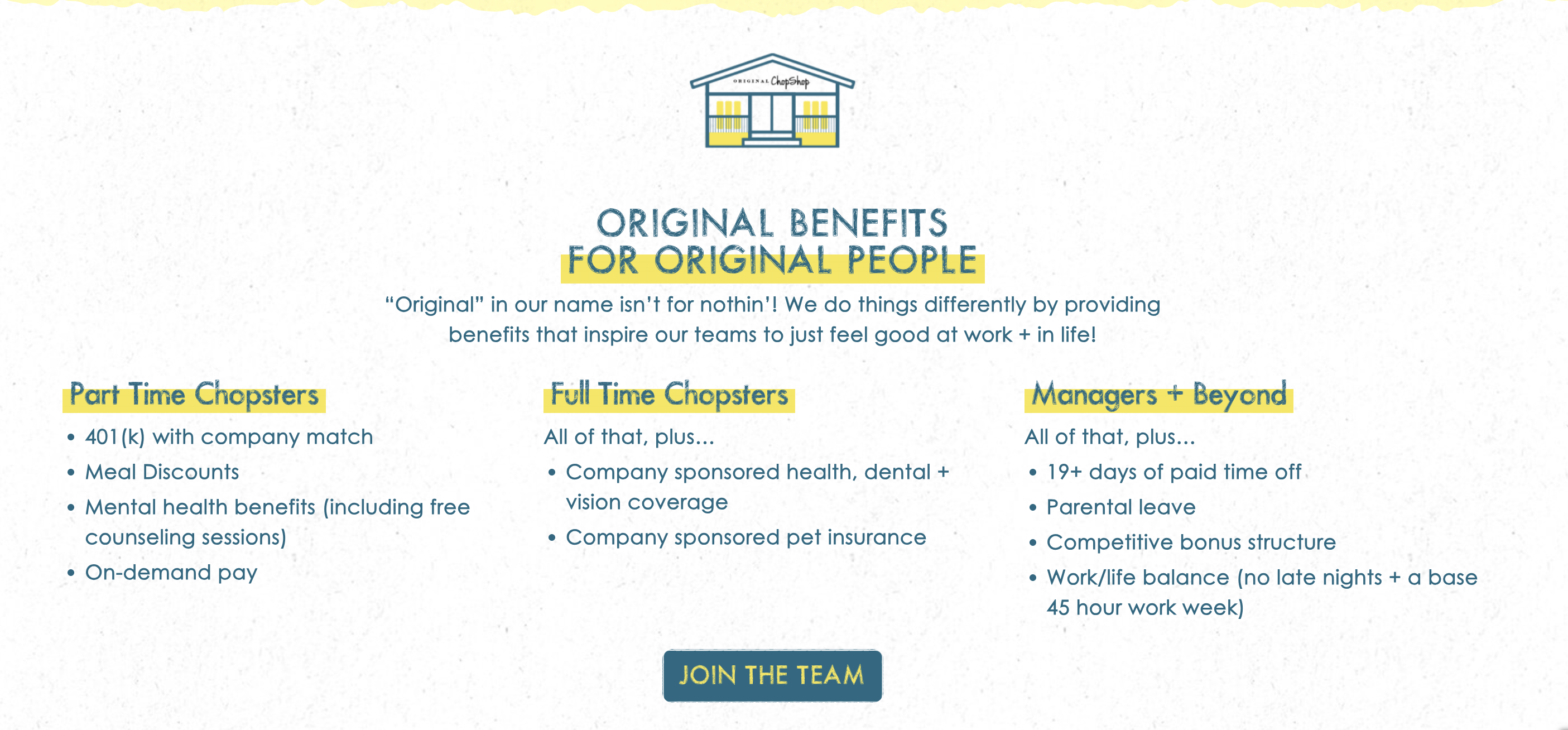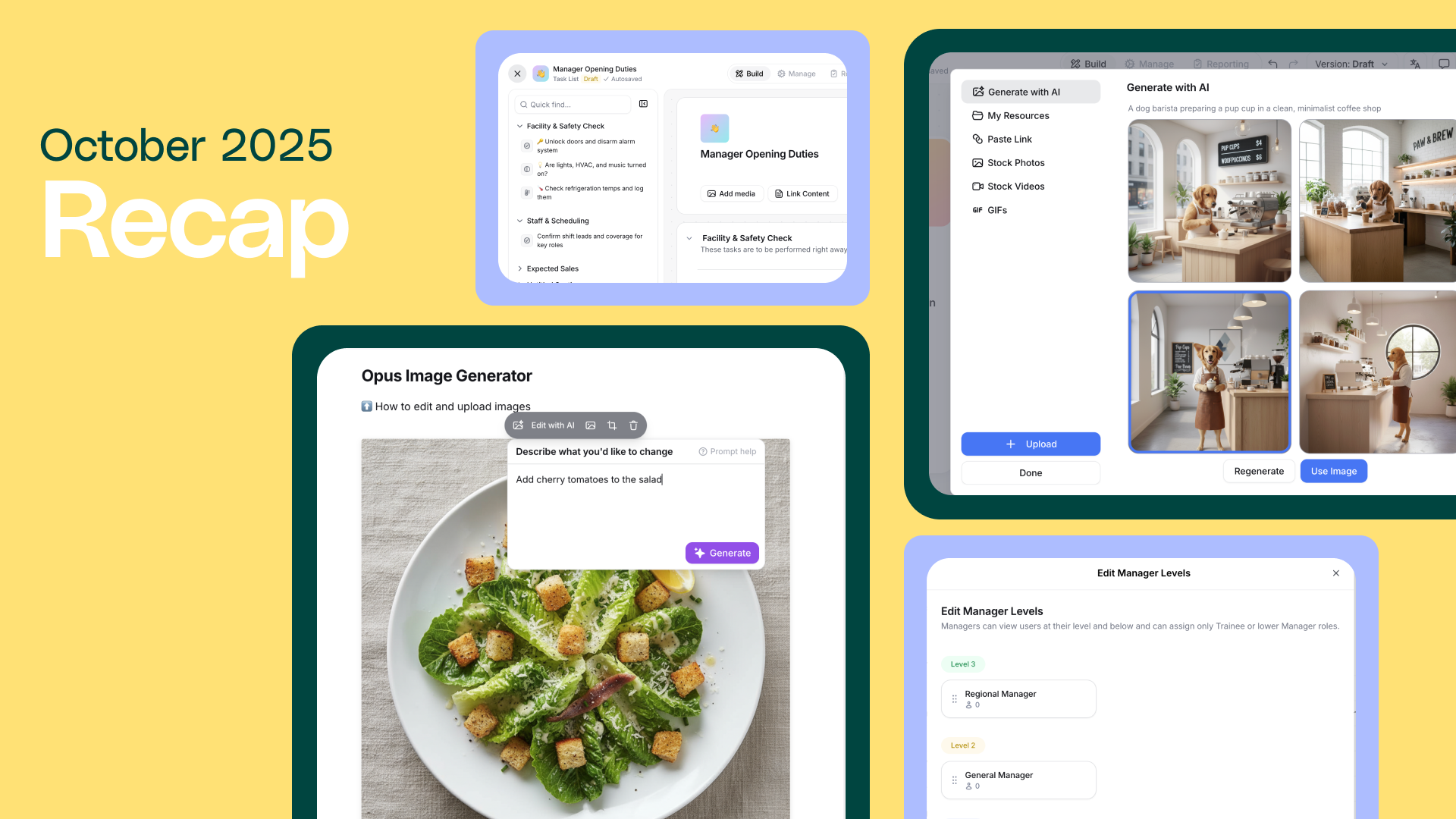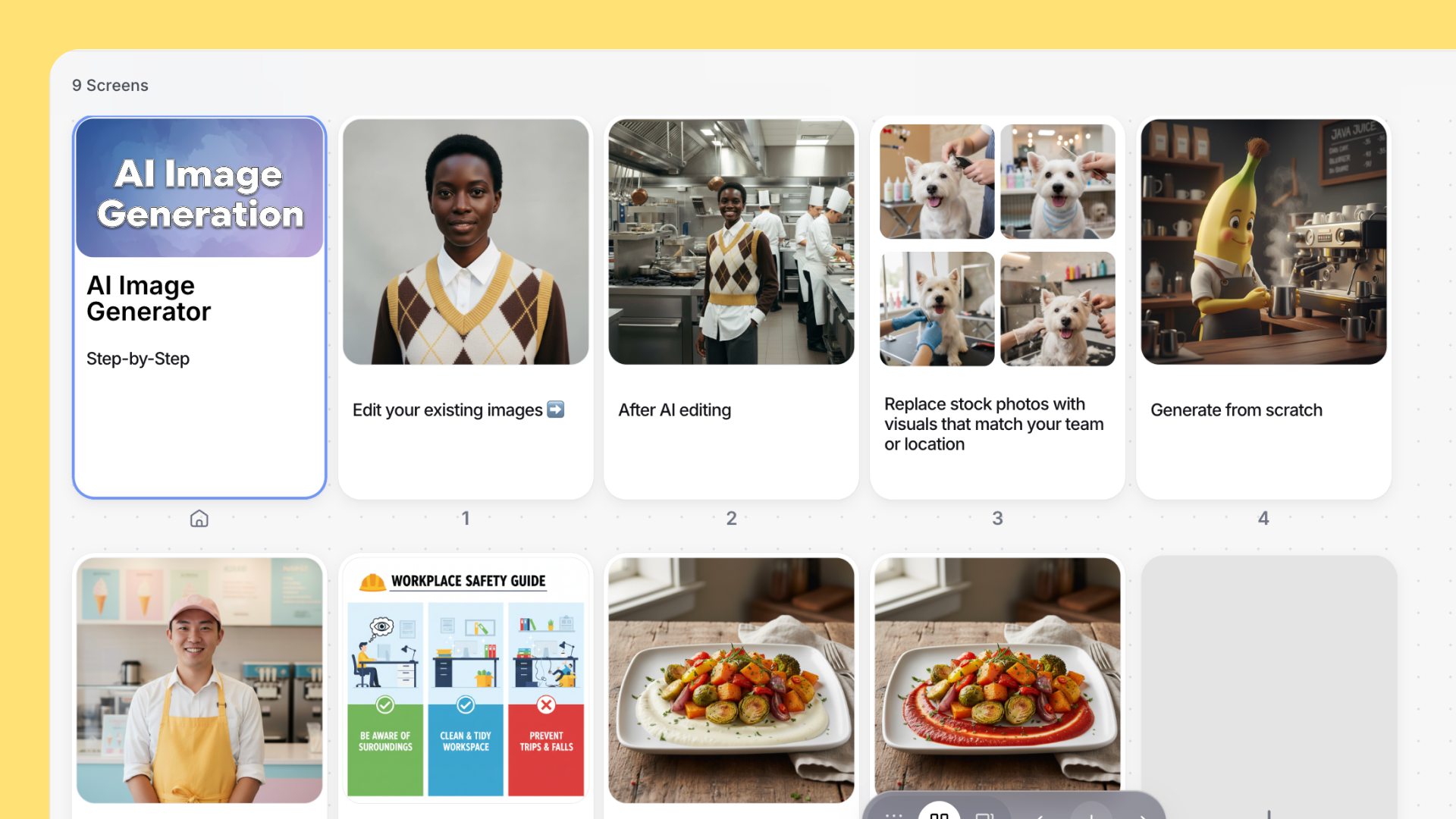Based on the Back to Basics conversation between Rachael Nemeth and Jason Morgan, CEO of Original ChopShop
Restaurant employee turnover averages 185% at major chains like Chipotle. Original ChopShop runs at nearly half that rate while maintaining GM tenure over four years—in an industry where most operators consider 18 months a win.
The difference isn't luck. It's systems.
Since acquiring Original ChopShop in 2016, CEO Jason Morgan has grown the better-for-you fast casual brand from 3 to 27 locations across Arizona, Texas, and Atlanta. His finance background shows in every decision: data-driven, detail-oriented, and ruthlessly practical. In a recent Back to Basics conversation, he broke down the exact retention strategies that work—no corporate jargon, just approaches any multi-location operator can implement.
🎧 Listen to the Full Conversation Want to hear Jason Morgan break down his approach to profitability, unit economics, and sustainable growth? Listen to the complete Back to Basics episode where he shares why most small restaurant companies fail to scale.
Seven Strategies That Reduce Restaurant Turnover
- Segment your workforce by retention intent
- Replace bonus structures with guaranteed compensation
- Invest in benefits that remove financial friction
- Create long-term retention bonuses worth staying for
- Run biannual performance reviews
- Keep span of control tight and hands-on
- Use a training platform built for frontline reality
Here's what actually reduces restaurant turnover:
1. Segment Your Workforce by Retention Intent
Most operators treat all employees the same. Morgan discovered that's the problem.
During a store visit in Phoenix about four years ago, Morgan noticed something odd: turnover numbers looked terrible, but he kept seeing the same faces every time he visited. The data wasn't telling the full story.
"We went back and cut the data in a different way. We went back and said, okay, if I've got 40 or so hourly people on each team, what are the top 15 people look like? How long have they been here? And it turned out those people had been here for two and a half years on average... And then the other 25 people are people that are going to be short-term employees with us. And it's just always going to be that way."
- Jason Morgan, CEO of Original ChopShop
The retention strategy: Stop fighting reality. Instead, optimize for two distinct groups.
For short-term employees (60-120 days):
- Focus intensive onboarding on menu knowledge and hospitality standards
- Use mobile training they can complete in short bursts
- Accept they're temporary and ensure they represent the brand well during their tenure
For long-term team members:
- Build clear career paths from cashier to shift leader to assistant GM
- Create continuous learning opportunities
- Invest in leadership development
Original ChopShop uses Opus Training for targeted onboarding that meets short-term employees where they are. The difference in completion rates tells the story:
"I think our last campaign rollout, we had like 94% of our team completed the training, which that's front of house and back of house, which is just mind blowing because in the older days, years ago, we'd be lucky if 40, 50% of the front of house completed it and nobody in the back of house would complete it."
- Jason Morgan, CEO of Original ChopShop
When 94% of your team—including back of house—completes training, you're not just checking compliance boxes. You're ensuring every team member, even the 60-day ones, knows how to deliver your standards.
2. Replace Bonus Structures with Guaranteed Compensation
Right around COVID, Original ChopShop eliminated performance bonuses for salaried team members entirely. They rolled that money into base salaries instead.
This contradicts conventional restaurant management wisdom. But Morgan's logic is hard to argue with:
"It's my belief that people don't work any harder if they have a bonus or not, that if you've hired the right people, that they're going to come to work every day and they're going to give you their best. And if a competitor opens next door and the sales are bad and they would have lost their bonus, that's not really their fault."
- Jason Morgan, CEO of Original ChopShop
Why this reduces turnover: Managers love predictable income. They can budget, plan, and avoid the anxiety of variable compensation based on factors often outside their control.
Morgan found Original ChopShop was constantly making exceptions to bonus policies anyway—acknowledging that external factors (construction, new competition, weather) shouldn't penalize managers. Eliminating the bonus structure just formalized what they were already doing.
The result: Stable, predictable compensation that makes it harder for competitors to poach your managers with slightly higher base salaries.
3. Invest in Benefits That Remove Financial Friction
Original ChopShop doesn't just offer standard benefits—they've built a package that addresses the real financial stressors their team members face.
Next-day pay for hourly workers: Team members can access their pay the next day if they want it. Enhanced benefits package: Mental health resources, improved packages for salaried team members, and employee assistance programs.
Why this matters for retention: When team members face unexpected expenses, they don't need to quit for a signing bonus elsewhere. Mental health benefits address restaurant industry realities—high stress, irregular schedules, and emotional labor. These benefits remove friction and create one less reason to explore other opportunities. The compounding effect: better benefits plus retention bonuses plus guaranteed compensation creates an employment experience genuinely better than alternatives.

4. Create Long-Term Retention Bonuses Worth Staying For
Original ChopShop's retention bonus structure is simple and compelling:
- $20,000 at 5 years
- $4,000 each year for years 6-9
- $20,000 at 10 years
"It's a little bit from a finance person. It's a little bit painful at times to go, ooh, we're out a lot of money next year for this plan. But at the same time, I've got tenure, like amazing tenure with these folks that have been here for a long time."
- Jason Morgan, CEO of Original ChopShop
The retention math: Replacing a general manager costs $20,000-$30,000 in recruiting, training, lost productivity, and mistakes during ramp-up. If a $20,000 bonus at five years prevents even one GM departure, you break even. If it keeps that GM for ten years, you've saved 4-5x the replacement cost.
Why retention bonuses work better than annual bonuses: They reward loyalty specifically, not just performance. They give employees a concrete financial reason to stay during tough months or when competitors come calling. And they create milestone moments—five years, ten years—that employees talk about and work toward.
5. Run Biannual Performance Reviews
Original ChopShop conducts performance reviews twice per year instead of annually.
The structure is straightforward: "This is what you're doing great at, this is what you need to work on, these are your goals." Team members get two chances per year to earn merit increases—the same total dollar amount as annual raises, but with faster course correction.
Why shorter review cycles reduce turnover: Problems don't fester for 12 months. An employee struggling in March gets feedback and support in May, not the following February. High performers get recognized and compensated faster, before competitors can poach them.
Morgan experimented with quarterly reviews but found the administrative burden outweighed the benefits. Biannual reviews hit the sweet spot: frequent enough for meaningful course correction, manageable enough to execute well.
Pro tip: Merit increases that happen twice yearly feel more responsive to employees, even if the total annual amount is identical to a single yearly raise. Perception matters in retention.
6. Keep Span of Control Tight and Hands-On
Original ChopShop's regional managers oversee just 4-6 restaurants—significantly tighter than industry standard.
"Most people have four to six restaurants in our regional focus. And they're hands-on, they're in the shops, they're not paper pushers or sitting on the computer in a booth while everybody else is working, they're shoulder to shoulder."
- Jason Morgan, CEO of Original ChopShop
Why tight span of control reduces turnover: Managers feel supported, not abandoned. When problems arise, help is immediate and substantial, not a phone call with someone overseeing 10 other crises.
Morgan reinforces this flat structure from corporate: the entire office—20 people—works in 3,000 square feet with zero private offices. "Nobody has an office. Like we're all like it's a big bullpen."
The retention impact: When the CEO doesn't have an office but regional directors do hands-on work in stores, it creates a culture where no one is "above" the work. Team members see leadership modeling the behavior they expect, which builds loyalty.
"When I walk into a store or Kyle Frederick, our COO walks into a store, nobody's scared of us. It's just like we're their buddy. We've created an environment that I think people are excited to see us."
- Jason Morgan, CEO of Original ChopShop
7. Use a Training Platform Built for Frontline Reality
All six strategies depend on one foundation: effective training that actually sticks.
Morgan's approach to training reflects his overall philosophy—narrow focus, high execution:
"With Opus, what we've focused on is we've narrowed it down to the onboarding and campaign rollouts. We wanted to be video based and we actually liked the idea of creating the content ourselves so that it has our look, our feel, our people."
- Jason Morgan, CEO of Original ChopShop
The key insight: Don't try to use your training platform for everything. Use it for what matters most—onboarding short-term employees quickly and rolling out campaigns to everyone consistently.
When Original ChopShop identifies execution problems, they can now point teams to specific training: "One of the things we'd like to be able to do very quickly is if we're having a store that's having problems with hospitality or food accuracy, to be able to point them to training for that in particular."
Why training platform choice affects retention: If your training platform requires desktop access or complex logins, your back-of-house team won't use it. If completion rates sit at 30-40%, your standards exist only on paper. If onboarding takes weeks instead of days, your 60-day employees leave before they're fully trained.
The completion rate transformation speaks for itself—from 30-40% to 94% across front and back of house. When training completion becomes normal, training stops being the thing managers dread and becomes the tool that helps them succeed.
In addition, digital training doesn't replace hands-on work. It enables it. When your team completes video-based training on menu knowledge and hospitality standards, your managers can focus shoulder-to-shoulder time on execution refinement, not teaching basics.

Key Takeaways: How to Reduce Restaurant Employee Turnover
Restaurant turnover isn't inevitable at 150-185%. Original ChopShop proves you can run at half that rate while growing aggressively.
Three actions to take this week:
- Segment your workforce data - Separate your top 15 team members by tenure from the rest. Calculate actual turnover for your core team versus short-term employees. This reveals where to focus retention efforts.
- Audit your compensation structure - Are you spending money on bonuses that create anxiety rather than motivation? Calculate if rolling bonus money into base salary would cost more or less than your current exceptions and workarounds.
- Measure training completion by role - If your back-of-house completion sits below 50%, you don't have a training problem—you have a training delivery problem. The right platform and approach can push completion to 90%+.
Morgan's finance background shows in his retention approach: everything is measurable, everything is tested, and nothing is left to hope. As he says about his methods:
"This business is very systematized in terms of there are things you do first, second, third, fourth when you're trying to grow a business. No one will ever convince me that that's not the case."
- Jason Morgan, CEO of Original ChopShop
For operators struggling with turnover, the system is clear: segment your workforce, remove friction, reward loyalty, provide support, and train everyone effectively. The operators who execute all seven strategies don't just reduce turnover—they build the stable teams that make growth possible.






